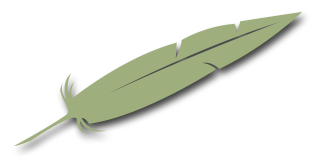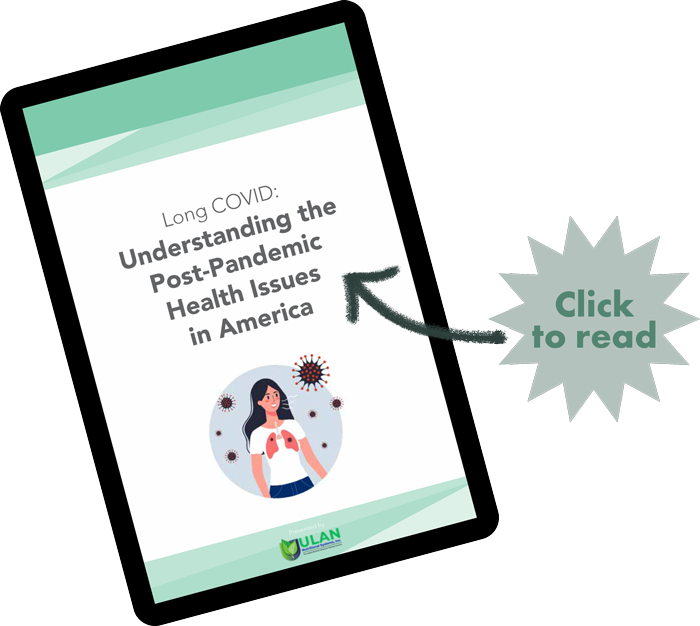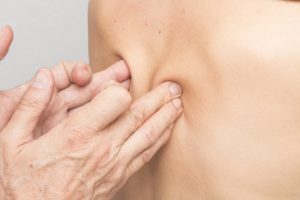- WE MOVED !!!
-
 Professional Acupuncture & Physical Therapy1118 East Superior Street
Professional Acupuncture & Physical Therapy1118 East Superior Street
Duluth, MN 55802(218) 724-3400 Clinic Hours
Mon8:00 am - 4:30 pmTue1:45 pm - 4:30 pmWed8:00 am - 4:30 pmThu8:00 am - 4:30 pmFriCLOSED

- Long Covid Booklet
Blog
The Flu & You

The flu, you, and Chinese medicinal clinical studies have suggested that using acupuncture as a preventative approach to colds and flu can reduce the incidence of upper respiratory tract infection and shorten the duration of the illness. Acupuncture and Chinese medicine work by rebalancing the body’s systems, regulating the body’s healing energies, and enhancing the immune system.
Even though germs, bacteria, and viruses are everywhere—in the food we eat, the air we breathe, and the water we drink—according to Chinese medical theory, they do not cause disease. Illness occurs when our Wei Qi and our meridian organ systems are weak and out of balance. When this occurs it creates a hospitable for germs, bacteria, and viruses to thrive, leading to a cold, the flu, or worse.
What in the world is Wei Qi? One of the main theories supporting acupuncture and its treatment of colds and the flu is the concept of Wei Qi. The concept of Wei Qi is similar to the Western concept of the immune system. It functions as a barrier protecting and defending the body against foreign substances, which can cause illness and disease. When it is strong and abundant, we remain healthy. When the supply of Wei Qi becomes inadequate, health is compromised and we become vulnerable to outside invaders.
Throughout our lives, a variety of factors affect our health and well-being. Although most of the time we recover quickly and regain our health, when these factors are numerous, our internal mechanisms become compromised and weakened. Our Wei Qi becomes depleted, and we get sick. By the time we notice the symptoms of our illness, the body’s self-regulating, self-balancing, and healing systems have already been affected.
Acupuncture and Chinese medicine support and strengthen the systems of the body that are involved in the production of Wei Qi, and can help rebalance and support the immune system and stimulate Wei Qi energy. By building up the supply of Wei Qi, and facilitating the smooth and free flow of it throughout the body, the body’s organs and meridian systems become strong, enhancing their ability to effectively fight off illness and disease.
Acupuncture and Chinese medicine are safe, natural, and effective ways to support the body’s self-regulating, self-balancing, and healing systems. If illness does occur, acupuncture can help you get back on your feet again, helping to stave off prolonged illness without the use of medication and over-the-counter drugs.
Tips for Staying Healthy:
- Consume 8-10 glasses of filtered water daily
- Exercise regularly to support the immune system
- Eat a healthy, organic diet, including foods with beta carotene (carrots, broccoli, sweet potatoes, garlic, and tomatoes)
- Limit sugar intake. Sugar taxes the immune system, especially when feeling under the weather
- Talk to your acupuncturist about herbs that can support your immune system
- Get plenty of rest
- Enjoy fun and relaxing activities
- Stimulate specific acupuncture points that support Wei Qi – such as Stomach 36
- Schedule regular acupuncture treatments to support the body’s self-regulating, self-balancing and healing systems
4 Ways to Massage Away Back Pain
Statistics show that almost 8 out of 10 people will experience low back pain at some point during their life, and many of them will be seeking medical treatment for back pain. In some instances, back pain can be fleeting and can be resolved with rest, heat and an occasional anti-inflammatory like ibuprofen.
 However, once the damage is done, the recurrence of back pain becomes more common. One reason for this is when we age, our muscles and tendons become less flexible and pliable. It is also very well known that in the United States, people are too sedentary with their lifestyles and being this way leads to excess weight gain that can create added pressure on the body, especially the lower back.
However, once the damage is done, the recurrence of back pain becomes more common. One reason for this is when we age, our muscles and tendons become less flexible and pliable. It is also very well known that in the United States, people are too sedentary with their lifestyles and being this way leads to excess weight gain that can create added pressure on the body, especially the lower back.
Massage can be a very important tool for relieving back pain and can be used proactively to prevent backaches. Let’s look at some ways that massage can help with back pain.
Hot stone massage is a form of massage that allows the massage therapist to utilize smooth, flat, heated stones. The stones are used to warm up tight muscles and relax them. This gives the massage therapist the ability to work on other parts of the body. They are placed on specific pressure points. As the areas are warmed and relaxed, it then allows the therapist to apply deeper pressure without discomfort.
Tuina (pronounced “twee na”) is a form of Chinese massage often used in conjunction with acupuncture and other Traditional Chinese Medicine modalities to help the body heal itself and maintain balance. There are many different techniques utilized in tuina, including gliding, shaking, pulling, tapping, kneading, rolling and pressing. Tuina combines massage and acupressure to remove blockages in the body, thus leading to improved health and well-being.
Acupressure points can be helpful for relieving back pain. Here are just a couple of the most common:
- Gallbladder 34 – This point is found bilaterally on the outer side of the lower leg. It can be found in the depression that is in front of and below the head of the fibula. This point is known as the influential point of the tendons.
- Urinary Bladder 40 – This point is located bilaterally on the crease behind the knee, right in the center, directly behind the knee cap. This point helps relieve pain along the spine. It is helpful for relieving muscle spasms and reducing pain associated with sciatic nerve involvement, which stems from the low back.
Self-massage is another great way to relieve back pain. Many people hold their stress in their upper or lower back, which leads to tight muscles, muscle spasms and even headaches. By gently massaging the muscles along the spine, back pain can be greatly reduced. Adding heat before and after massage will help to keep the muscles loose with less chance of spasming.
Regardless of how you choose to deal with your back pain, consider incorporating massage or tuina, into your healing regime. Regular treatments can keep muscles from tensing up, increase circulation, improve posture and strengthen the back to reduce future problems.
Ask us how we can help your lower back pain so you can take back control of your life. Let’s schedule an appointment today!
Meridian Point: Large Intestine 4

Large Intestine 4 is one of the most important and influential acupoints in the entire body. The Chinese name for Large Intestine 4 is “He Gu” meaning union valley or converging valley. The point is located on the hand in the web between the thumb and index finger, also described as the depression where the index finger and thumb bones part. This area of the hand is often described as “valley like” hence the name converging valley.
The large intestine has many important functions in the body. Connected to the Western medicine function of the large Intestine, it is vital in digestion and bowel regulation, but it also has many functions above and beyond that in Chinese medicine. The large intestine is associated with the emotions of sadness and grief, it can help build immunity as it works as a paired channel to the lung meridian and has a big effect on the flow of Qi and blood in the body.
Large Intestine 4 is a strong point for building the immune system and can be used for when someone has a cold or a virus like the flu. It can be used to treat febrile illnesses, rashes from wind or heat, allergic reactions causing rhinitis, as well as sore throat and difficulty swallowing. It is the command point of the face, nose, jaw and mouth and can be used to treat many problems associated with those. Toothaches and TMJ can be painful, but Large Intestine 4 can reduce the pain without even going near the affected areas. It is one of the main points for headaches and many people instinctively press it on their hand when they have a headache, without even realizing it is an acupuncture point. If someone has suffered a stroke, this point can help with paralysis and aid in recovery.
The large Intestine has a great effect on the flow of qi and blood in the body and Large Intestine 4 is a very strong point to get everything moving. Pain, according to Chinese medicine, is often described as Qi and blood being stagnant or “stuck” and Large Intestine 4 is critical to move this stagnation, especially when coupled with another point called Liver 3. Together, this pair of points is called The Four Gates and together they are a powerhouse in getting the Qi and blood circulated. They can effectively treat pain, depression, constipation, promote labor, expel retained placenta and help alleviate menstrual disorders caused by stagnation such as endometriosis.
Large Intestine 4 is contraindicated in pregnancy because it is so powerful and moving, but it can be effectively used to induce labor. Used in conjunction with another powerhouse acupuncture point Spleen 6, these two points are commonly used together to start labor, often with electroacupuncture to stimulate the points even more than needles alone.
Once labor has started, Large Intestine 4 can be used if labor is stalled or prolonged as well as used after childbirth to expel the placenta, decrease postpartum bleeding and decrease the time between childbirth and the discharge of the placenta.
Large Intestine 4 is an exceedingly influential point and one of the most commonly used points in acupuncture treatments. It can also be effective in treating a range of emotional issues such as depression, insomnia, stress, irritability and severe PMS. This point should not be underestimated and its alternative name of Tiger’s Mouth is barely descriptive of its strength in acupuncture treatments.
Does Acupuncture Relieve Back Pain?
Acupuncture is an ancient medical practice that has been delivering documented and positive results for a multitude of conditions. This practice has taken place for thousands of years and has been a reliable source of treatment for many ailments. Acupuncture is done by inserting needles into the skin at specific points on the body helping to correct imbalances and restore the natural flow of the body’s energies, thus returning you to a more natural state of well-being.
Evidence for the Effectiveness of Acupuncture for Back Pain
The National Institute of Health (NIH) has published a number of studies that show acupuncture is quite effective as a pain management therapy. They have demonstrated that it is effective in treating neck, back, and joint pain in a multitude of studies.
In their examination of treating chronic pain using acupuncture, the NIH concluded that, “Acupuncture appears to be a reasonable option for people with chronic pain to consider.” They found that those undergoing treatment during the study had positive results and subsided pain. According to PracticalPainManagement.com, “A review article found pain relief using acupuncture comes from deactivating the source of pain, modulating endorphin levels.” Even WebMD.com writes that, a “[…] recent review of 22 acupuncture studies showed that it provided short-term relief from chronic back pain.”
This implies that alongside acupuncture treatment, eating well and taking care of your body in other ways such as eating well and exercising regularly can help your back pain.
Pain Relief is Just One Benefit of Acupuncture
For those suffering from long term, chronic pain – only one thing matters: relief. Chronic pain can degrade the quality of a person’s life, and make day to day activity unbearable. Those who suffer from it can lose their ability to work, and often lose the desire to do the things they enjoy.
Effective pain management can absolutely improve a person’s quality of life. While western pain relievers do work, the side effects and risk of addiction make them sub optimal. The job of the acupuncturist is to address chronic pain and offer a non-addictive, non-westernpain relief option. Acupuncture is safe, natural and drug-free.
When we consider the ability of acupuncture to decrease the need for opiates and other dangerous painkillers, it’s easy to see how acupuncture not only relieves pain, but also saves lives.
Give us a call today if you or a loved one is suffering from back pain.
Germ Theory: 101

Why do some people always catch a cold, and others don’t?
Viruses, germs, and bacteria are everywhere. They are in the food we eat, the air we breathe and the water we drink, but not all of them are bad or harmful.
Think of the immune system as your body’s security detail. The cells, tissues, and organs that comprise it help repel foreign invaders like harmful bacteria, parasites and other microbes that can cause infections. Disorders of the immune system range from everyday annoyances like mild seasonal allergies to serious illnesses like leukemia. Stress, lack of sleep and other common conditions can contribute to a weakened immune system, which can make you vulnerable to infections.
When a particular meridian/organ system is already weak and unable to resist “outside” invasion, it is therefore prone to attack by germs, such as viruses and bacteria. Illness and disease can only result when our body provides a hospitable environment.
Your meridian channels control the flow of healing energy, called Qi (“chee”) throughout your entire body, including your organs. The function (health) of your lungs and the strength of your immune system all depend upon the quality, quantity, and balance of healing Qi. According to Chinese medicine, the “true cure” of disease is simply NOT to kill germs, but to reestablish and build up the body’s amount of Qi so it can fight them off naturally. Ultimately, an adequate amount of Qi is required to restore the integrity of your meridian and organ system. Germs simply struggle to set up camp in a strong and healthy body.
It is also thought that your body has a protective layer surrounding it called Wei Qi. Your Wei QI also acts as a protective barrier to help keep illness at bay. When your Wei Qi is weakened, you become more vulnerable to illness.
Germs gather and thrive only in weakened parts of a person’s body. When there is an imbalance of Qi, the normal functions of your body will ultimately be affected. This can compromise the normal immune system response to germs and lead to illness.
The onset of disease requires both a pathogen and a host. When germs are strong, but the environment of the host (you) is stronger, the disease could be resisted. If the host is weak, however, then your environment can become a hospitable refuge for viruses, germs, bacteria, and other microbes to set up shop.
Good news! Acupuncture therapy can treat a wide range of health conditions, including immune deficiency, by stimulating and balancing the immune system. The goal is to strengthen the body’s response to foreign invaders, therefore, preventing illness and disease. Acupuncture can strengthen a weakened immune system by increasing red and white cell counts, T-cell count and enhancing humoral and cellular immunity. Acupuncture can regulate immune function and treat the underlying cause of the disease by reducing symptoms, speeding up the healing of infection and normalizing the body’s immune response.
